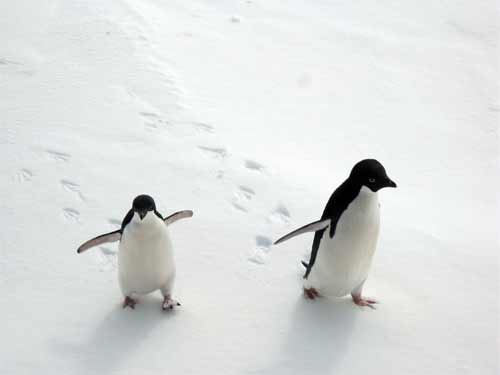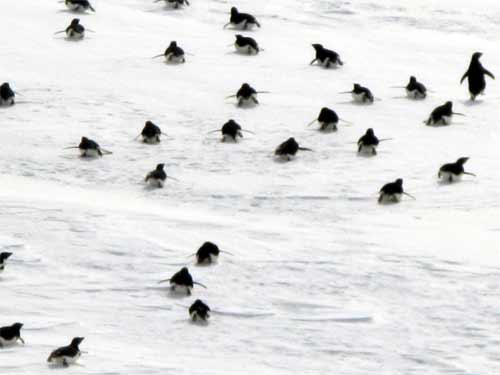Antarctica is a very harsh and extreme environment though is very rich in wildlife due to the high productivity of the Antarctic Ocean during the summer months. The high productivity is driven by long days providing abundant light and nutrients brought to the surface layers by the upwellings at the Antarctic Convergence.
Animals need to have a wide range of specializations in order to survive these conditions. There are many adaptions depending on species. We will take a general look at some of those adaptations most relevant to living in Antarctica.
Most penguins have a compact shape (low surface area to volume) to prevent heat loss. Adelie penguins have dense, specialized feathers for insulation on land and a fat layer under the skin as insulation in the water. Emperor penguin chicks have thick, fluffy feathers for insulation on land. These feathers are mostly useless in the sea and therefore the penguins moult before swimming.
Of course animals need to be able to withstand the harsh environments of Antarctica with simple anatomical adaptations, but there are significant behavioral adaptations that allow animals to survive as well. For instance, Adelie penguins migrate north before the harsh winter season sets in. They also build nests of stone to raise their eggs above the ice surface to prevent freezing.
In contrast, Emperor penguins huddle together in the winter to help conserve heat. Without this group behavior they would die (Emperors are the only animal that remains in Antarctica during the long, dark winter night).
Emperor penguins do not build nests; instead mother passes the egg to the male where the egg, then chick sits on the feet of the father, covered by a flap of skin for protection.
Finally we look briefly at some physiological adaptations penguins use to survive the extremes of Antarctica. Depending on the species of penguin, the resting heart rate is between 60-100 beats per minute (bpm) and are then slowed to as low as 20 bpm during a dive to reduce oxygen consumption.


Next topic: Animal Adaptations - Seals


Comments